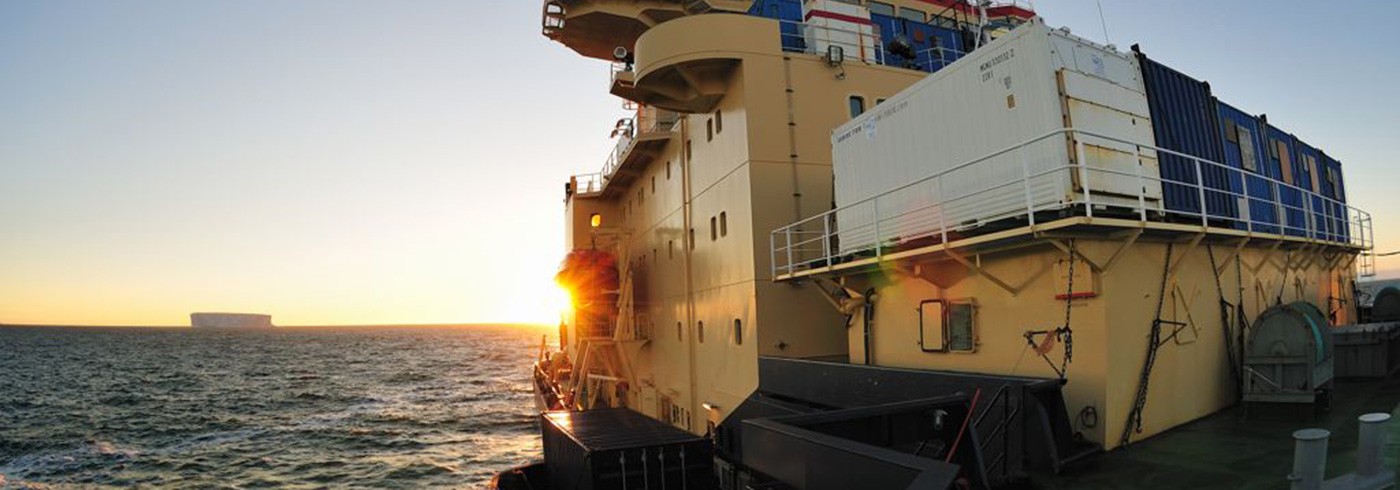Why measure cosmic radiation with a three-tonne block of ice on an icebreaker?
8 February 2010 - 12 March 2010
Freezer container with detectors installed on Oden. Inside is thethree tonne ice block and neutrino detectors. Photo: Allan Hallgren
Researchers at the geographic South Pole have built IceCube, the world’s largest neutrino observatory. One reason to search for neutrinos is that they can emerge relatively unhindered from those parts of the universe where the cosmic radiation with the highest energies is generated. Cosmic radiation was discovered some 100 years ago, but its origins are still to some extent unknown. IceCube could shed light on many other questions in the field of physics.
IceTop, which is a network of 162 ice blocks containing light detectors, is an important part of the IceCube observatory. IceTop lies on top of the inland ice sheet, above the deepest part of the observatory. Each ice block measures 2 m in diameter and 1 m in height. The ice has been frozen in such a way that no bubbles form, making it extremely clear, and each ice block contains two light detectors. We can use IceTop to measure variations in the particle radiation from the sun. Solar eruptions cause variations in the atmospheric radiation level, and affects communications and power grids on the earth.

Variation in neutron radiation with latitude. The blue curve with the right-hand scale shows Oden’s latitude. The black curve with the left-hand scale shows the count rate for the neutron detectors. The count rate has been corrected for variations in atmospheric pressure. The presence of port structures and other ships increases the neutron count because of the interaction between the solar radiation and matter, as is evident in the upward deviations.
Latitude calibration
The purpose of the project on board icebreaker Oden during the Oden Southern Ocean 2009/10 expedition was to calibrate the ice blocks as detectors. The method used is known as “latitude scan”, which makes use of the fact that the energy of the selection of particles that reach the detector is affected by the earth’s magnetic field, making the variations in latitude during shipment between Sweden and Antarctica an important factor. Data were gathered continuously from the time the equipment was installed on-board Oden until the icebreaker returned to port in Sweden. Figure 1 clearly shows how the neutron radiation varied with latitude during the voyage.
An ice block similar to those found in IceTop at the South Pole was frozen in a freezer container in Uppsala and equipped with four light detectors (Photo 2). The freezer container was loaded on-board Oden and connected to measuring computers that collected data throughout the entire voyage.

Light detectors in place in the ice block. Part of the wood frame that holds the block in place in the freezer container can be seen above the ice. Photo: Allan Hallgren
The measurement data have been checked and will be usable for calibration purposes. The job requires the coordination of a number of different parameters, some of which had to be done by means of manual control, as the GPS clock failed to function as intended. As a result, the analysis is taking somewhat longer than originally planned. The measurements will be published in a scientific journal, probably Nuclear Instruments and Methods. However, their main value will come later, primarily in improving the quality of the measurements from IceTop, and the results from the observations from IceCube will be published as usual in scientific journals in the fields of astrophysics and particle physics.







